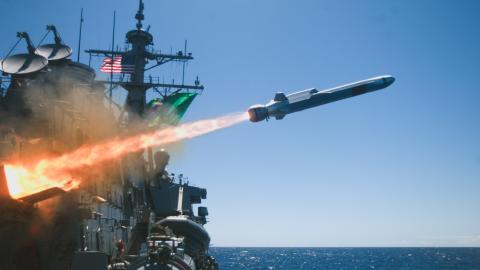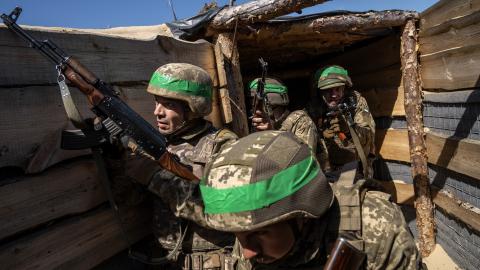Below Hudson Senior Fellow Can Kasapoğlu offers a military situation report about the Russia-Ukraine War.
Executive Summary
- Chinese support for Moscow’s war: Ukraine’s military intelligence service revealed that it discovered Chinese components in Russian drones. Ukraine alleges that Chinese nationals may have illicitly shared technology with Russia.
- Ukraine’s long-range strike campaign: Ukraine appears to have hit a Russian arms depot northeast of Moscow. The site suffered a significant explosion.
- Battlefield assessment: The Kremlin continued to strike Ukrainian cities and press on multiple fronts. Russian forces may be preparing for a large-scale offensive in the coming months.
1. New Evidence of China’s Involvement in Russian Drone Programs
Ukrainian President Volodymyr Zelenskyy pledged that the Security Service of Ukraine (SBU) would share a significant piece of intelligence with Beijing: that Chinese citizens are working in a drone production plant in Russia and may have bypassed authorities to transfer Chinese technology to Moscow. Zelenskyy made his statement after reports emerged that up to 150 Chinese mercenaries are fighting with Russian forces in occupied Ukraine.
Kyiv has not yet released any evidence of Zelenskyy’s allegations. But Ukraine’s Main Directorate of Intelligence (GUR) reported that it found Chinese parts in Russia’s Shahed-baseline drones. According to the GUR, new Shahed variants contain Chinese transceivers, generators, signal converters, and other microcircuits. More significantly, the new Shahed variant uses a controlled reception pattern antenna that is manufactured by the Beijing Microelectronics Technology Institute. It is possible that Chinese workers in Russian drone factories are responsible for the presence of these Chinese components in the Kremlin’s Shahed drones.
Open-source intelligence further suggests a Chinese presence in Russia. Since early 2023 the joint Russia-Iran drone plant in Tatarstan has doubled in size, and it now features many new buildings and covered walkways to facilitate the transportation of sensitive materials. More interestingly, the Alabuga Special Economic Zone in Tatarstan hosts the Deng Xiaoping Logistics Complex, which serves as a transportation hub between Russia and China.
Moreover, in the city of Izhevsk, Russia appears to have established a second production line for Shahed copies. These drones resemble the Shahed-136. But they use a Chinese version of a Limbach 550 engine, whereas the original Shahed drones use the MD-550, a Limbach clone produced by the Mado Company in Iran. According to Reuters, the Izhevsk production line is operated by IEMZ Kupol, a subsidiary of Almaz-Antey, a Russian state-owned company. In 2024 Reuters reported that IEMZ Kupol had established covert drone production programs in China to produce unmanned systems for Russian use in Ukraine.
This report will continue to monitor China’s involvement in the Russian military campaign in Ukraine and its potential implications for the conflict.
2. Battlefield Assessment
While last week saw no significant changes to the battlefield, intensive fighting at the tactical level occurred along multiple fronts. The volume of Russian drone strikes rose, and multiple engagements involved drone-on-drone warfare.
Additionally, several tons of ammunition exploded at an arsenal in Vladimir Oblast that belongs to Russia’s 51st Main Missile and Artillery Directorate (GRAU). It appears that a Ukrainian long-range strike caused the explosion, which is likely to disrupt Russian military operations.
Despite American efforts to negotiate a cessation of hostilities, Russia is acting as if it is preparing for a large-scale offensive in the coming months. While Moscow has indicated a willingness to talk directly with Kyiv, it continued to bombard Ukrainian population centers last week.
As the window to begin a spring offensive draws nearer to closing, Russian forces remain active on multiple fronts. This week the Kremlin focused its efforts on eastern Ukraine, particularly Pokrovsk, Chasiv Yar, and Toretsk. The railway hub of Kupiansk, in northeast Ukraine, also suffered heavy aerial bombardment, which is likely to continue. Finally, Russia continued to conduct waves of tactical assaults to enhance its bridgehead positions along the Oskil River.
Following the expulsion of Ukrainian combat formations from the Russian region of Kursk, the Kremlin increased its attacks on Sumy Oblast, the adjacent region of Ukraine. Fighting in Ukraine’s south was less intense than in its northern regions, but clashes took place in the direction of Orikhiv.



















